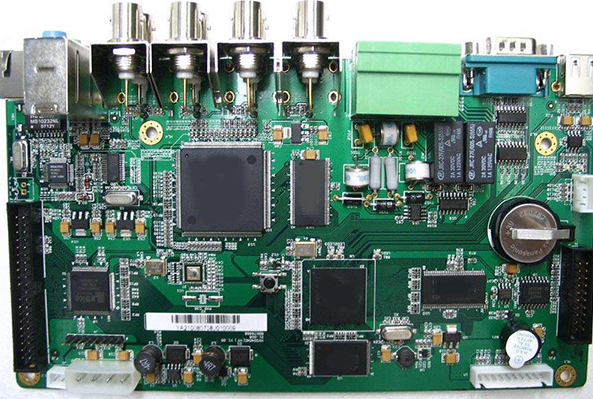Thermal analysis assists designers in determining the electrical properties of components on a PCB and in determining whether components or PCB board will burn out due to high temperatures. Simple thermal analysis only calculates the average temperature of a PCB, while complex transient models are built for electronic equipment with multiple PCBS and thousands of components.
No matter how carefully an analyst models the thermal power of electronics, PCBS, and electronic components, the accuracy of the thermal analysis ultimately depends on the accuracy of the component power consumption provided by the PCB designer. Weight and physical size is very important in many applications, if the components of the actual power consumption is small, could lead to design high safety coefficient, which contributed to the design of PCB with reality, or too conservative element power consumption value as according to thermal analysis, by contrast, is also more serious thermal design safety coefficient is too low, namely component temperature than the actual runtime Analysts predict higher, such problems are generally solved by installing cooling devices or fans to cool the PCB. These add-ons add cost and manufacturing time, and adding a fan to the design creates a layer of reliability instability, so PCBS now use active rather than passive cooling (such as natural convection, conduction, and radiative cooling) to allow components to operate in lower temperature ranges.

Poor thermal design ultimately leads to higher costs and reduced reliability, which can happen in all PCB designs. Some effort to accurately determine component power consumption and then perform PCB thermal analysis can help produce small, functional products. Accurate thermal models and component power consumption should be used to avoid reducing PCB design efficiency.
1. Component power calculation
Accurately determining the power consumption of a PCB component is an iterative process. PCB designers need to know the component temperature to determine the lost power, and thermal analysts need to know the power loss to input into the thermal model. Designers first guess a working environment temperature or obtained from the initial thermal analysis estimates, and the element power input to refine heat model, calculate the PCB and related components "node" (or hot), the temperature of the second step is to use the new temperature to the power consumption of the computing element, and calculate the power input for the next step in the process of thermal analysis again. In an ideal world, the process continues until its value stops changing.
However, PCB designers are often under pressure to complete tasks quickly and do not have enough time to perform time-consuming and repetitive electrical and thermal performance determination of components. A simplified approach is to estimate the total power consumption of the PCB as a uniform heat flux acting on the entire PCB surface. Thermal analysis can predict the average ambient temperature, allowing designers to calculate the power consumption of components and to know whether additional work needs to be done by further double-counting component temperatures.
Generally, manufacturers of electronic components provide specifications for the components, including the maximum operating temperature. Component performance is usually affected by the ambient temperature or internal temperature of the component, consumer electronic products often use plastic components, its maximum operating temperature is 85 degree Celsius; Military products often use ceramic components that operate at a maximum temperature of 125 ° C and are typically rated at 105 ° C.PCB designers can use the temperature/power curve provided by the device manufacturer to determine the power consumption of the component at a given temperature.
Transient thermal analysis is the most accurate method to calculate the temperature of the element, but it is very difficult to determine the instantaneous power consumption of the element.
A better compromise is to analyze the rating and worst-case conditions separately under steady state conditions.
PCBS are affected by various types of heat, and typical thermal boundary conditions that can be applied include:
Natural or forced convection from front and rear surfaces;
Thermal radiation from front and rear surfaces;
Conduction from PCB edge to equipment housing;
Conduction to other PCBS through rigid or flexible connectors;
Conduction from PCB to support (bolted or bonded);
Conduction of radiators between 2 PCB interlayers.
Thermal simulation tools are available in many forms. Basic thermal modeling and analysis tools include universal tools for analyzing arbitrary structures, computational fluid dynamics (CFD) tools for system flow/heat transfer analysis, and PCB applications for detailed PCB and component modeling.
2. Basic Process
Accelerate PCB thermal design based on mature experience provided without affecting and contributing to the improvement of system electrical performance indicators.
On the basis of system and thermal analysis prediction and device-level thermal design, the results of thermal design can be predicted through board-level thermal simulation to find design defects and provide system-level solutions or device-level solutions for modification.
The effect of thermal design is tested by thermal performance measurement, and the applicability and effectiveness of the scheme are evaluated.
The thermal simulation model is modified and accumulated through the continuous practice process of pre-estimation-design-measure-feedback cycle to accelerate the thermal simulation speed and improve the thermal simulation accuracy. Supplement PCB thermal design experience.
3. Board level thermal simulation
The board level thermal simulation software can simulate the thermal radiation, heat conduction, heat convection, fluid temperature, fluid pressure, fluid velocity and motion vector of PCB in 3d structure model, and can also simulate forced heat dissipation, vacuum state or natural heat dissipation. At present, Flotherm,Betasoft and so on are the typical software for plate thermal analysis.